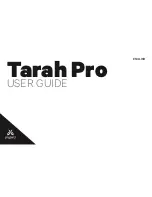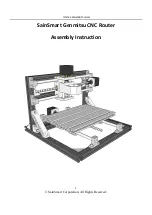
User Manual
Aolynk DR814Q ADSL2+ Broadband Router
9 Appendix – IP Address and Subnet Mask
72
ields of a host ID can be 0s or 255s as these numbers are reserved for
special use.
9.2 Subnet Mask
z
Not all the f
Note:
A network mask looks like a regular IP address and a subnet mask can tell the division
f the network ID and the host ID: A bit set to 1 means this bit is part of the network ID
o
and a bit set to 0 means this bit is part of the host ID.
Subnet masks are used to define subnets For example, to divide a Class C address
s:
ield 4 is also included. Since this
net
hosts
s in field4 can have four values (00, 01, 10, and 11), so there are four
nets. Each subnet uses the remaining six bits in field 4 for its host IDs, ranging from
192.168.1.0 into two subnets, you need to set the subnet mask as follow
255.255.255.128
It is much more straightforward to define the address in binary notation.
11111111. 11111111. 11111111.10000000
For any Class C address, all the bits in the filed 1 through field 3 are part of the network
ID, but note how the mask specifies that the first bit in f
extra bit has only two values (0 and 1), this means there are two subnets. Each sub
uses the remaining 7 bits in field 4 for its host IDs, which range from 1 to 126
(instead of the usual 0 to 255 for a Class C address).
Similarly, to divide a class C network into four subnets, set the mask as follows:
255.255.255.192 or 11111111. 11111111. 11111111.11000000
The two extra bit
sub
1 to 62.
Note:
S metimes a subnet mas
o
k does not specify any additional network ID bits, and thus no
b
is called a default subnet mask. These masks are:
B: 255.255.0.0
z
Class C: 255.255.255.0
hey are so called because they are used for an initially configured network without
subnets.
su nets exist. Such a mask
z
Class A: 255.0.0.0
z
Class
T








































